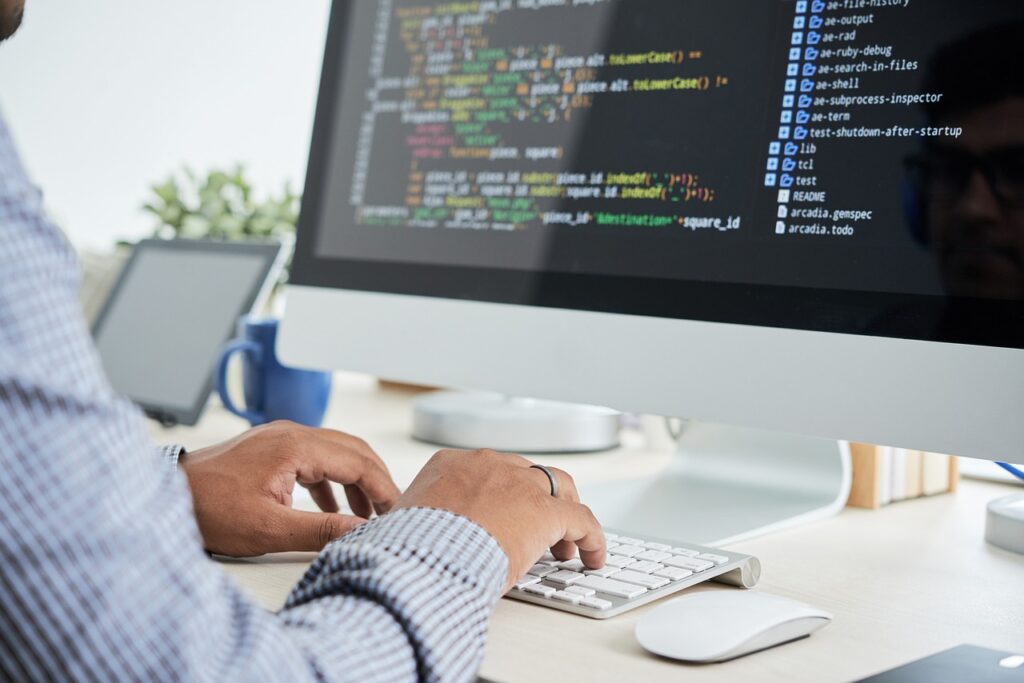The software development landscape is evolving at an unprecedented pace, driven by advancements in artificial intelligence, security protocols, and new computing paradigms. As we move into 2025, software developers and businesses must stay ahead of these trends to remain competitive. In this article, we’ll explore the top 10 software development trends that are set to shape the industry in 2025.
1. Artificial Intelligence (AI) and Machine Learning (ML) Integration
Why It’s Trending:
AI and ML are transforming software development by automating code generation, enhancing testing processes, and optimizing system performance. Developers are increasingly leveraging AI-powered tools for intelligent code completion, debugging, and predictive analytics.
Key Applications:
- AI-driven development environments that suggest code snippets and detect bugs in real-time.
- Machine learning algorithms for predictive analytics in fintech, healthcare, and retail.
- Natural language processing (NLP) for chatbots and voice-based applications.
Impact:
Faster development cycles, improved software quality, and a reduced workload for developers.
2. Rise of Agentic AI
Why It’s Trending:
Agentic AI refers to systems capable of making autonomous decisions based on pre-set goals without continuous human intervention. This trend is pushing the boundaries of AI by enabling more dynamic and responsive applications.
Key Applications:
- Autonomous customer support systems that resolve issues without human intervention.
- AI-driven financial advisors for personalized investment strategies.
- Intelligent transportation systems that manage traffic and logistics autonomously.
Impact:
Enhanced user experiences and greater efficiency in industries like finance, logistics, and customer service.
3. Post-Quantum Cryptography
Why It’s Trending:
As quantum computing becomes a reality, traditional encryption methods face obsolescence. Post-quantum cryptography focuses on developing security algorithms that can withstand quantum attacks.
Key Applications:
- Encryption algorithms for financial transactions and healthcare data.
- Secure communication protocols for government and defense sectors.
- Blockchain networks with quantum-resistant cryptographic methods.
Impact:
Ensures data security in a post-quantum era, maintaining trust in digital communications.
4. Spatial Computing
Why It’s Trending:
Spatial computing merges the digital and physical worlds through augmented reality (AR), virtual reality (VR), and mixed reality (MR). This trend is revolutionizing sectors like healthcare, retail, and education.
Key Applications:
- AR-based remote assistance for field service engineers.
- VR training modules for healthcare and military applications.
- Spatial analytics for smart cities and retail experiences.
Impact:
Improved user engagement and practical applications in training, education, and remote work.
5. AI Governance Platforms
Why It’s Trending:
With AI’s growing influence comes the need for governance frameworks to ensure ethical and compliant use. AI governance platforms help monitor AI systems for bias, transparency, and accountability.
Key Applications:
- Compliance tools for GDPR and CCPA regulations.
- Monitoring AI algorithms for fairness and transparency in hiring and finance.
- Automated auditing of AI systems for ethical compliance.
Impact:
Promotes responsible AI use, minimizing risks associated with bias and non-compliance.
6. Ambient Invisible Intelligence
Why It’s Trending:
Ambient intelligence integrates AI into everyday environments, making systems context-aware and capable of proactive responses. This trend focuses on making technology intuitive and non-intrusive.
Key Applications:
- Smart home systems that adjust lighting and temperature based on occupant behavior.
- Retail environments with personalized shopping experiences.
- Healthcare monitoring systems that track patient vitals seamlessly.
Impact:
Seamless user experiences with minimal interaction required.
7. Polyfunctional Robots
Why It’s Trending:
Polyfunctional robots, capable of performing multiple tasks autonomously, are transforming manufacturing, healthcare, and logistics by enhancing efficiency and reducing operational costs.
Key Applications:
- Autonomous warehouse robots for sorting and packing.
- Surgical robots with multiple functions in healthcare.
- Multifunctional drones for surveillance and delivery services.
Impact:
Reduced labor costs and increased productivity in various sectors.
8. Disinformation Security
Why It’s Trending:
The rise of deepfakes and misinformation has prompted a focus on software solutions that can detect and mitigate disinformation. Security systems are increasingly integrating AI to verify content authenticity.
Key Applications:
- AI-based tools for detecting deepfake videos and images.
- Social media monitoring systems to flag disinformation campaigns.
- Blockchain for content verification and traceability.
Impact:
Preserves the integrity of information in digital communications and social media.
9. Energy-Efficient Computing
Why It’s Trending:
As data centers expand globally, the environmental impact of computing is becoming a significant concern. Energy-efficient computing focuses on reducing power consumption through optimized hardware and software solutions.
Key Applications:
- Energy-efficient algorithms for cloud computing.
- Low-power hardware components for data centers.
- AI-driven systems to optimize power usage dynamically.
Impact:
Lower operational costs and reduced carbon footprint for tech companies.
10. Neurological Enhancement
Why It’s Trending:
Neurological enhancement involves software that interfaces directly with the human brain to improve cognitive functions or treat neurological disorders. This trend is at the intersection of neuroscience and software development.
Key Applications:
- Brain-computer interfaces (BCIs) for patients with paralysis.
- Cognitive enhancement software for memory and learning.
- Neural monitoring systems for early detection of mental health disorders.
Impact:
Breakthroughs in healthcare, education, and even human-computer interaction.
Conclusion
The software development trends of 2025 reflect a growing emphasis on security, ethical AI, and enhanced user experiences. Staying ahead of these trends will require developers to adopt new tools, frameworks, and best practices. By embracing these advancements, businesses can build robust, secure, and future-proof applications that meet evolving user demands.


